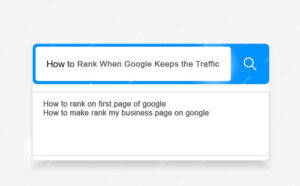In the ever-evolving landscape of marketing and advertising, where strategies and channels are constantly shifting, measuring return on investment (ROI) becomes paramount. ROI assessment enables companies to gauge the effectiveness of their marketing endeavors, allocate resources efficiently, and maximize profitability. However, navigating this terrain can be challenging, given the multitude of factors at play. In this comprehensive guide, we delve into the intricacies of measuring ROI in the realm of marketing and advertising, providing insights and strategies to aid businesses in this critical endeavor.
I. Introduction
Definition of ROI in Marketing
ROI, or Return on Investment, represents the financial gains or losses generated as a result of marketing and advertising campaigns. It serves as a quantitative measure of the profitability of these endeavors.
Importance of Measuring ROI
Understanding ROI is essential for optimizing marketing budgets, making informed decisions, and ensuring sustainable business growth. It offers a clear picture of which strategies are yielding results and which require refinement.
Challenges in ROI Measurement
Measuring ROI is not without its challenges. Factors such as the long-term nature of marketing campaigns and the difficulty in attributing results to specific efforts can complicate the process.
II. Setting Clear Objectives
Establishing Specific Goals
Companies must define clear, specific objectives for their marketing and advertising campaigns. These objectives should align with broader business strategies and be quantifiable.
Aligning Objectives with Business Strategy
A cohesive alignment between marketing goals and overall business objectives ensures that efforts contribute directly to the company’s success.
Identifying Key Performance Indicators (KPIs)
Selecting the right KPIs allows for focused tracking of metrics that directly impact ROI, such as conversion rates, customer acquisition costs, and customer lifetime value.
III. Data Collection and Analysis
Utilizing Advanced Analytics Tools
Advanced analytics tools, such as Google Analytics and marketing automation platforms, are invaluable for collecting and analyzing data.
Gathering Accurate Data
Ensuring data accuracy is paramount. Data should be collected consistently and be free from errors or biases that could skew results.
Analyzing Data for Insights
Data analysis unveils patterns, trends, and areas for improvement. It allows businesses to make data-driven decisions and optimize marketing strategies.
IV. Attribution Modeling
Understanding Different Attribution Models
Various attribution models, such as first-touch, last-touch, and linear attribution, offer different ways of assigning credit to touchpoints in the customer journey.
Assigning Credit to Various Touchpoints
Accurate attribution helps businesses understand which marketing channels and touchpoints contribute most to conversions, aiding in resource allocation.
Evaluating the Customer Journey
A holistic view of the customer journey helps in understanding how different touchpoints interact and influence the conversion path.
V. Cost Calculation
Accounting for all Marketing and Advertising Costs
Businesses should meticulously account for all costs associated with marketing and advertising campaigns, including creative, ad spend, and personnel costs.
Calculating the Total Investment
A comprehensive assessment of the total investment allows for precise ROI calculations.
Tracking Overhead Expenses
Overhead costs, often overlooked, should be factored into ROI calculations to provide a more accurate picture of true costs.
VI. Revenue Tracking
Monitoring Sales and Conversions
Tracking sales and conversions provides a direct link between marketing efforts and revenue generation.
Tracking Customer Behavior
Understanding customer behavior beyond conversions, such as repeat purchases and referrals, offers insights into long-term ROI.
Measuring Customer Lifetime Value
Calculating customer lifetime value helps in estimating the long-term impact of marketing efforts on revenue.
VII. Comparative Analysis
Benchmarking against Industry Standards
Benchmarking ROI against industry standards and competitors provides context for assessing performance.
Competitor Analysis
Studying competitors’ strategies and ROI metrics can reveal opportunities and highlight areas for improvement.
Identifying Opportunities for Improvement
Comparative analysis enables companies to identify gaps and adjust strategies to maximize ROI.
VIII. ROI Calculation Methods
Return on Investment Formula
The basic ROI formula involves subtracting the investment cost from the revenue generated and dividing the result by the investment cost.
Return on Advertising Spend (ROAS)
ROAS focuses specifically on advertising expenses and revenue, providing a more granular view of advertising ROI.
Customer Acquisition Cost (CAC)
CAC calculates the cost of acquiring a single customer, offering insights into the efficiency of customer acquisition efforts.
IX. Evaluating Intangible Benefits
Recognizing Non-Monetary Gains
In addition to monetary ROI, companies should recognize and value non-monetary benefits such as increased brand awareness and customer loyalty.
Assessing Brand Awareness and Reputation
Positive changes in brand perception can have a long-term impact on ROI, even if they aren’t immediately quantifiable.
Customer Satisfaction Impact
Customer satisfaction and loyalty contribute indirectly to ROI by reducing churn and increasing customer lifetime value.
X. Continual Optimization
Using ROI Data for Decision-Making
ROI data should inform ongoing marketing strategy adjustments, allowing for agile decision-making.
Adjusting Marketing Strategies
Flexibility and adaptability in marketing strategies are essential for maximizing ROI in an ever-changing landscape.
Testing and Experimentation
A culture of experimentation enables companies to refine strategies and uncover new avenues for ROI improvement.
XI. Case Studies
Real-world Examples of ROI Measurement
Exploring case studies of companies successfully measuring and improving ROI provides practical insights.
Successful Strategies and Outcomes
Highlighting specific strategies and their outcomes showcases what can be achieved through effective ROI measurement.
Lessons Learned
Examining the lessons learned from case studies offers valuable takeaways for businesses seeking to enhance their ROI measurement efforts.
XII. Conclusion
Recap of Key Points
Measuring the ROI of marketing and advertising efforts is a complex but vital task for businesses. Setting clear objectives, collecting and analyzing data, and continually optimizing strategies are all essential steps.
Emphasizing the Importance of ROI Measurement
Embracing ROI measurement as an ongoing practice is key to staying competitive in the dynamic world of marketing and advertising.
Encouraging Ongoing Analysis and Improvement
In conclusion, the ability to measure and improve ROI is essential for businesses aiming to thrive in the highly competitive marketing landscape. By following the strategies and best practices outlined in this guide, companies can enhance their ROI measurement efforts and drive sustainable growth.










